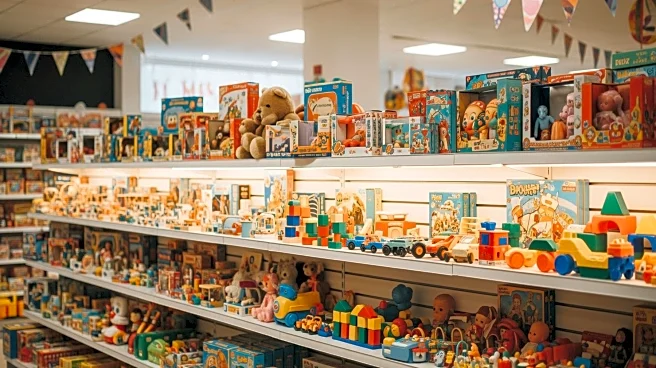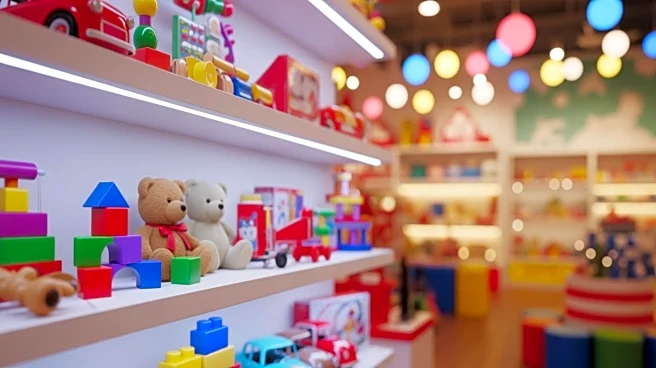What's Happening?
Toys R Us is making a significant comeback by opening new stores in California, including flagship locations in Camarillo and Emeryville. This expansion is part of a broader strategy to open eight flagship stores and 20
seasonal locations across the United States. The toy retailer, which filed for bankruptcy in 2017, has been working to rebuild its presence after closing hundreds of stores. WHP Global acquired a controlling interest in Toys R Us in 2021 and has partnered with Macy's to open shop-in-shop locations. The new stores will feature popular brands such as Lego, Barbie, and Hot Wheels, aiming to attract holiday shoppers.
Why It's Important?
The reopening of Toys R Us stores marks a significant step in the company's recovery and expansion strategy. This move is crucial for the toy industry, especially as the holiday season approaches, a peak time for toy sales. The expansion could boost local economies by creating jobs and increasing consumer traffic in shopping areas. Additionally, the partnership with Macy's and the strategic location choices reflect a targeted approach to regain market share and consumer trust. The success of this expansion could set a precedent for other struggling retailers looking to revitalize their brands.
What's Next?
Toys R Us plans to continue its expansion with additional store openings in Texas, Colorado, and New York. The company is likely to monitor the performance of these new locations closely, especially during the holiday season, to assess consumer response and sales figures. Positive outcomes could lead to further investments and store openings in other regions. Stakeholders, including WHP Global and Macy's, will be watching the developments closely to determine future strategies and partnerships.
Beyond the Headlines
The revival of Toys R Us highlights the challenges and opportunities in the retail sector, particularly for companies that have faced bankruptcy. It underscores the importance of strategic partnerships and innovative retail concepts, such as shop-in-shop models, in attracting consumers. The expansion also raises questions about the sustainability of brick-and-mortar stores in an increasingly digital shopping environment.















